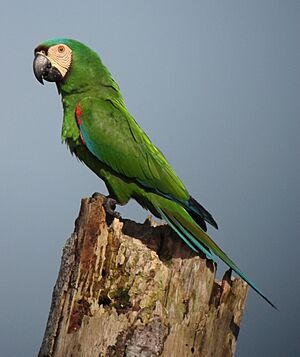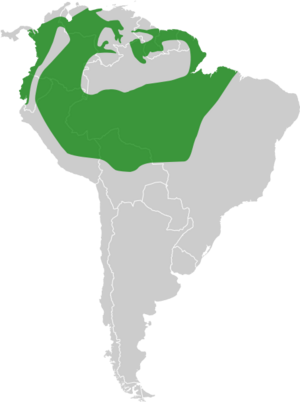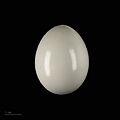Chestnut-fronted macaw facts for kids
Quick facts for kids Chestnut-fronted macaw |
|
|---|---|
 |
|
| Conservation status | |
| Scientific classification | |
| Genus: |
Ara
|
| Species: |
severus
|
| Subspecies | |
|
|
 |
|
| Synonyms | |
|
Psittacus severus Linnaeus, 1758 |
|
The chestnut-fronted macaw (also called the severe macaw) is a cool parrot. Its scientific name is Ara severus. It's one of the biggest "mini-macaws." These birds grow to about 45 cm (18 inches) long. About half of that length is their long tail!
You can find them in many parts of Northern South America. They live from Panama down into the Amazon Basin in Brazil and central Bolivia. There's even a group living wild in Florida. These macaws can live a long time, sometimes from 30 to 80 years!
About Its Name
The chestnut-fronted macaw got its official name in 1758. A Swedish scientist named Carl Linnaeus described it. He first put it with other parrots in a group called Psittacus. Its scientific name was Psittacus severus.
Later, in 1799, a French scientist named Bernard Germain de Lacépède created the group Ara for macaws. Our macaw is now in this group. The name Ara comes from a Brazilian language called Tupi. It sounds like the macaw's call! The word severus is Latin. It means "grim" or "stern."
What It Looks Like
The chestnut-fronted macaw is mostly green. It has patches of red and blue on its wings. Its head has a chestnut brown patch right above its beak. The beak is black. The skin around its eyes is white with tiny lines of black feathers.
This macaw is special because it's the only mini-macaw with these feather lines around its eyes. In the wild, these birds are usually friendly. But when they become adults, their personality can change. They might become more aggressive. This is why they are sometimes called "Severe" macaws. If they are pets, they need a lot of care and training to stay tame.
These macaws are about 45 to 50 cm (18 to 20 inches) long. They usually weigh between 300 and 410 grams (11 to 14 ounces).
How They Have Babies
Chestnut-fronted macaws build their nests in holes inside trees. The female usually lays two or three white eggs. She sits on the eggs for about 28 days to keep them warm. This is called incubation.
After the chicks hatch, they stay in the nest for about 70 days. Then, they are ready to fly out on their own. This is called fledging.
Images for kids





